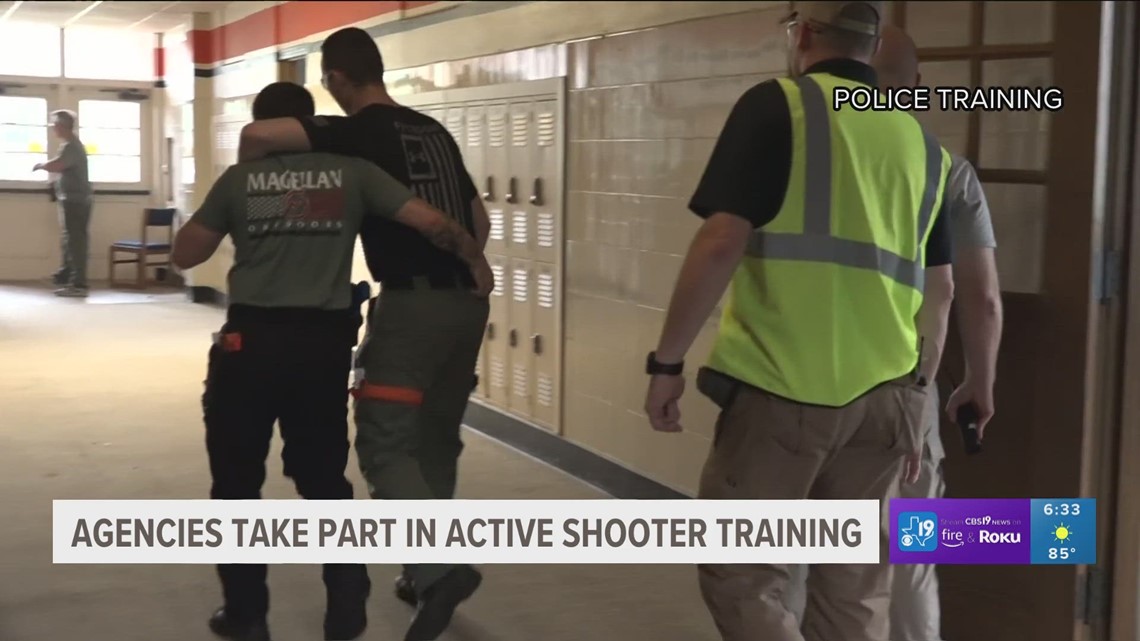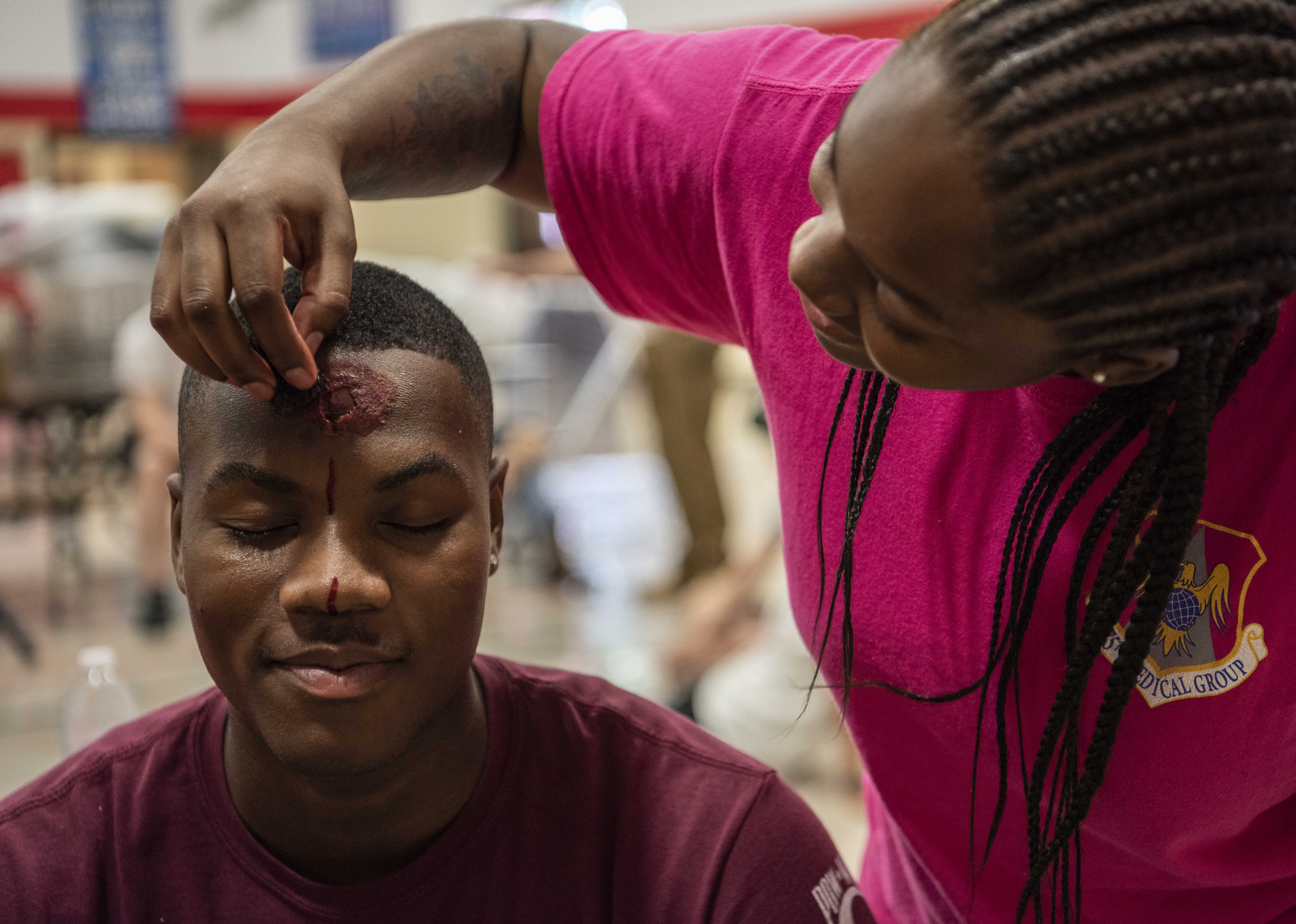Active Shooter Training: How to Prepare for and Respond to Risks
Active Shooter Training: How to Prepare for and Respond to Risks
Blog Article
Encouraging Individuals Through Active Shooter Training: A Crucial Element of Safety And Security Protocols
In a globe where safety and security threats continue to be a consistent issue, the relevance of empowering people with energetic shooter training can not be overstated. The demand to furnish individuals with the needed expertise and abilities to react efficiently in high-stress circumstances has ended up being an important part of modern-day protection procedures. As we navigate an ever-evolving landscape of possible risks, the conversation bordering active shooter training becomes an important facet of guaranteeing the safety and security and health of people in numerous settings. The inquiry occurs: exactly how can appropriate training equip individuals to make split-second choices that could mean the difference in between life and death?
Understanding Active Shooter Events
Energetic shooter occurrences are unforeseeable and can unravel rapidly, making it crucial for individuals and companies to have a detailed understanding of exactly how these occasions commonly take place. By evaluating previous incidents and determining common patterns, safety and security professionals can better prepare individuals to respond effectively in such high-stress circumstances.
Aspects such as the shooter's account, selection of tools, and target choice play important roles fit the outcome of an active shooter occurrence. Furthermore, understanding the possible warning indicators and habits exhibited by individuals that may pose a hazard is crucial for early discovery and intervention. By studying the various aspects of energetic shooter occurrences, organizations can customize their training programs to attend to details vulnerabilities and enhance the general safety and safety and security of their workers.
Developing Situational Recognition
Fostering enhanced understanding of one's surroundings is critical in proactively replying to prospective risks and making certain personal safety and security in vibrant environments. Creating situational recognition includes being attuned to the details and tasks happening in the environment, making it possible for people to discover anomalies or dubious actions that might indicate a danger. This heightened state of performance permits early acknowledgment of possible threats, giving critical secs to make educated choices and take essential actions to safeguard oneself and others.
To improve situational recognition, individuals can practice techniques such as keeping a 360-degree recognition of their environments, identifying prospective leave factors, and identifying things that could be made use of for cover or protection in instance of an emergency situation. Furthermore, being conscious of changes in noise levels, group behavior, or sudden movements can also add to a much more comprehensive understanding of the environment. By refining these skills with routine technique and training, individuals can much better prepare themselves to browse uncertain and potentially hazardous circumstances with raised self-confidence and effectiveness.
Applying Feedback Approaches
Reliable execution of response techniques is critical in alleviating the effect of active shooter incidents and ensuring the safety and security of people in high-risk scenarios. When confronted with an energetic shooter threat, individuals have to be prepared to act promptly and decisively. One crucial action strategy is the "Run, Hide, Battle" protocol, which offers a structured method for people to adhere to based upon their certain circumstances. Going to safety and security must always be the initial alternative if practical, followed by hiding and looking for cover if getaway is not possible. As a last resource, individuals may require to be prepared to challenge the shooter in a fight for survival.
Educating programs that replicate energetic shooter situations can help people acquaint themselves with action techniques and construct the needed skills to react efficiently in a crisis. These simulations can help people understand the relevance of situational understanding, interaction, and coordination in reacting to an active shooter risk. By exercising action strategies in a regulated setting, individuals can boost their chances of survival and decrease the impact of these damaging events.

Enhancing Interaction and Sychronisation
To enhance reaction initiatives in energetic shooter circumstances, smooth interaction and sychronisation amongst people and pertinent authorities are paramount. Regular training sessions concentrating on interaction methods can help individuals comprehend the relevance of succinct and precise details sharing during high-stress circumstances.

Sustaining Training and Preparedness
Preserving a recurring and consistent training program is crucial for sustaining preparedness and readiness in replying to energetic shooter events. Regular training sessions make certain that individuals keep essential abilities and understanding essential to react efficiently in high-stress situations. By carrying out constant drills and simulations, companies can reinforce correct procedures, improve muscle mass memory, and identify locations for improvement.
To maintain training and readiness, it is essential to perform regular testimonials and updates to training methods (active shooter training). As dangers evolve and new details appears, training programs should adapt to show existing ideal techniques and techniques. In addition, providing accessibility to resources such as on-line training modules, informational products, and correspondence course can help people stay informed and engaged with their training
Moreover, fostering a culture of readiness within a company is vital to preserving a high level of preparedness. Urging open interaction, advertising situational recognition, and emphasizing the relevance of caution can empower individuals to take an active function in their own safety and security and safety and security. Inevitably, a commitment to ongoing training and preparedness is basic in mitigating risks and efficiently reacting to energetic shooter cases.
Verdict
To conclude, active shooter training is a crucial element why not try these out of safety procedures that equip individuals to react successfully in crisis circumstances. By recognizing the nature of energetic shooter occurrences, creating situational recognition, carrying out action strategies, improving communication and coordination, and sustaining training and readiness, individuals can better safeguard themselves and others. It is necessary for companies and individuals to prioritize energetic shooter training as component of their general security steps to make sure a much safer atmosphere for all.
In a world where safety and security risks remain a consistent problem, the find here relevance of encouraging people through active shooter training can not be overemphasized. As we browse an ever-evolving landscape of potential risks, the conversation surrounding energetic shooter training arises as a vital element of making sure the safety and health of individuals in different atmospheres.In verdict, energetic shooter training is a critical component of safety and security protocols that empower people to react properly in crisis scenarios. By dig this understanding the nature of active shooter incidents, developing situational understanding, carrying out action techniques, improving interaction and control, and sustaining training and readiness, individuals can better protect themselves and others. It is necessary for organizations and people to focus on active shooter training as component of their total protection steps to make certain a safer atmosphere for all.
Report this page